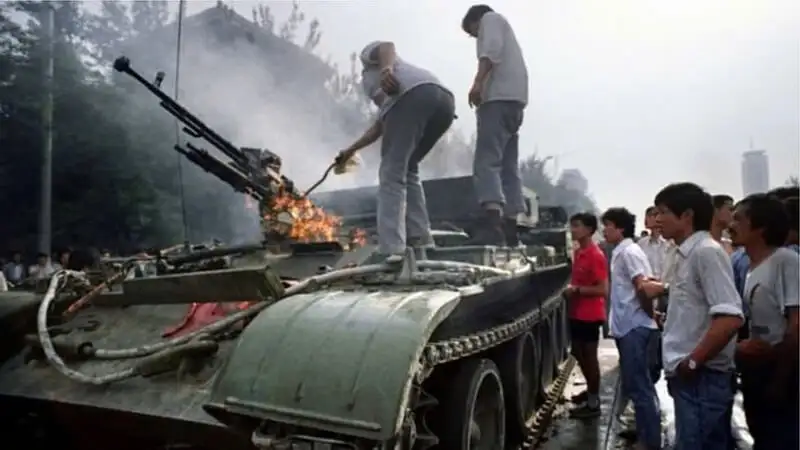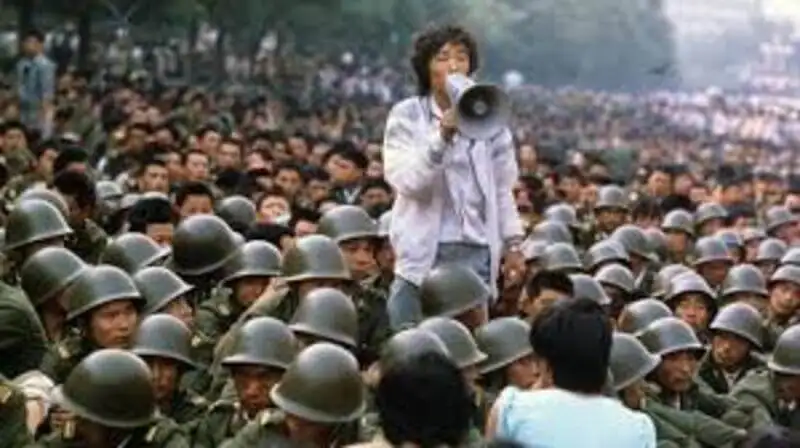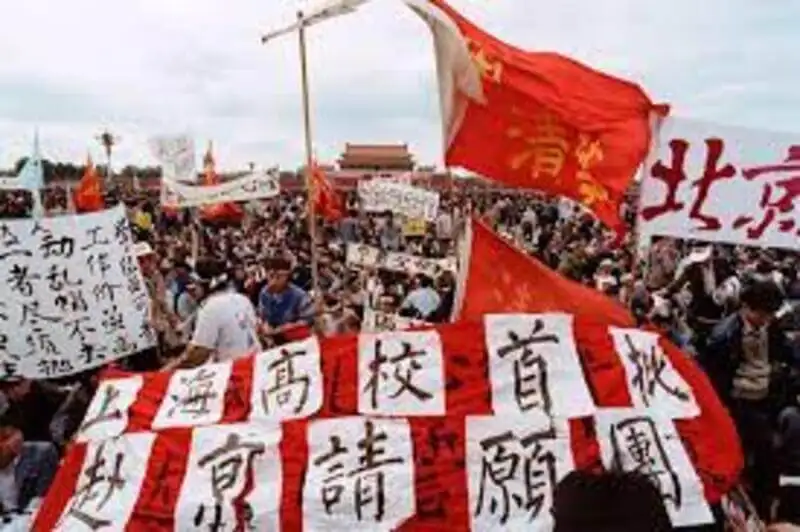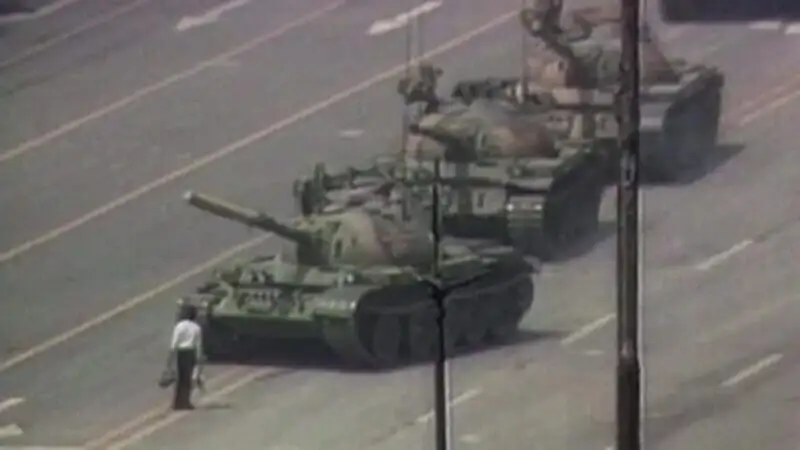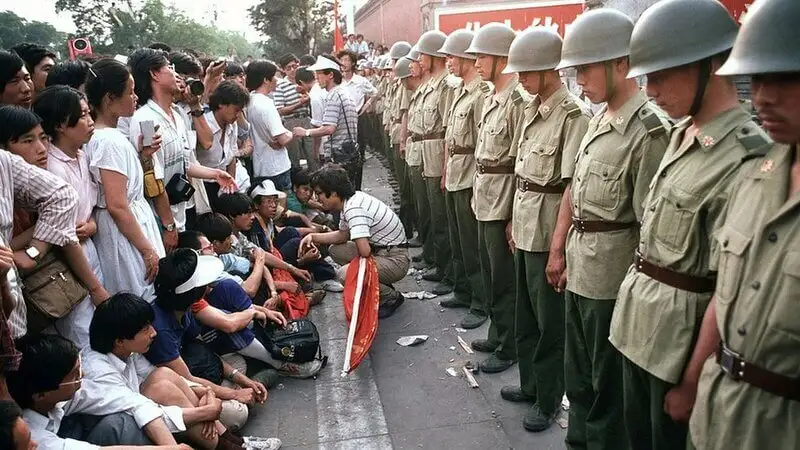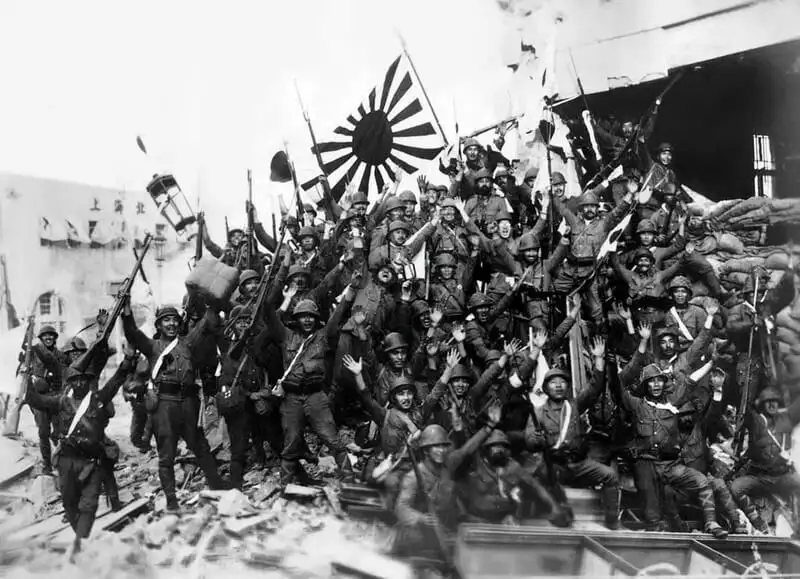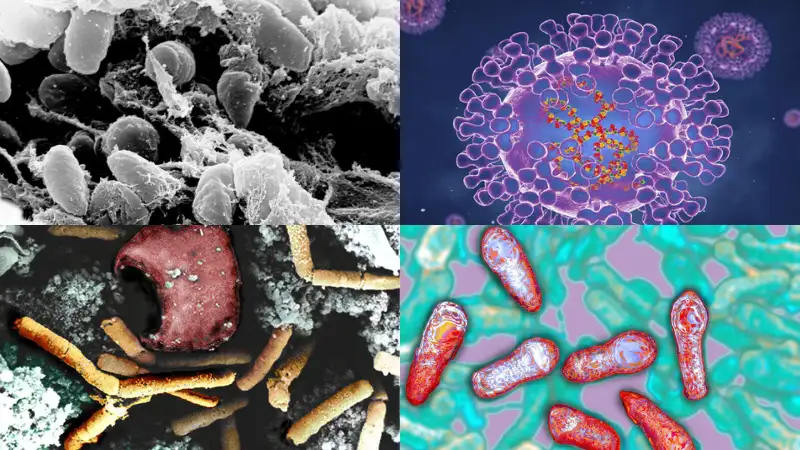The Tiananmen Square protests of 1989 (Tiananmen Square Massacre) were a student-led movement calling for democracy, freedom of speech, and a free press in China. Initially, democracy advocates marched through Beijing to Tiananmen Square following the death of Hu Yaobang in April 1989. Hu, a former Communist Party leader, had worked to promote democratic reforms in China.
While commemorating him, students demanded a more open and democratic government nationwide. Gradually, thousands joined the students at Tiananmen Square, with the number of protesters swelling to tens of thousands by mid-May. However, the protests were brought to a deadly end through a violent crackdown on June 4 and 5, 1989.
Causes of the Tiananmen Square Massacre
The protests at Tiananmen Square stemmed from long-standing discontent over restrictions on political freedom in China, where the one-party system led by the Communist Party held dominant control. Additionally, prolonged economic hardship played a significant role.
Although the Chinese government introduced some reforms in the 1980s, incorporating elements of capitalism, the working class and the poor still faced major challenges, including unemployment and rising poverty.
The protesting students also argued that China’s education system failed to equip them with the skills needed to adapt to a market-driven, globally integrated economy. Some government leaders sympathized with the protesters’ demands, while others viewed them as a political threat.

- Protesters at Tiananmen Square confronted military forces, setting tanks ablaze in resistance. (Source: Collected)
Declaration of Martial Law
On May 13, 1989, some student protesters began a hunger strike, inspiring similar hunger strikes and protests across China. As the movement grew, the Chinese government became increasingly alarmed, especially since the protests disrupted a visit by Soviet Premier Mikhail Gorbachev on May 15.
The welcoming ceremony for Gorbachev, originally planned at Tiananmen Square, was moved to the airport. Despite this change, the visit proceeded smoothly. Nevertheless, feeling the need to suppress the protests, the Chinese government declared martial law on May 20 and deployed 250,000 troops to Beijing.
By late May, over a million protesters had gathered in Tiananmen Square and surrounding areas. They held daily marches and candlelight vigils. Images of these events were broadcast by media outlets to audiences in the United States, Europe, and around the world.

- The Chinese government declared martial law on May 20, deploying 250,000 troops to Beijing. (Source: Collected)
Tiananmen Square Events
When the initial military presence failed to quell the protests, the Chinese authorities escalated their response. At 1 a.m. on June 4, 1989, Chinese soldiers and police entered Tiananmen Square, firing live ammunition into the crowd.
Though thousands of protesters attempted to flee, some fought back by throwing stones at the attacking forces and setting military vehicles on fire. Estimates from Western journalists and diplomats present in Beijing that day suggest the death toll from the Tiananmen events ranged from hundreds to thousands, with up to 10,000 people arrested.
World leaders, including Mikhail Gorbachev, condemned the military action. Less than a month later, the U.S. Congress voted to impose economic sanctions on China, citing human rights violations.

- A crowd of protesters at Tiananmen Square with banners demanding democracy and reform in June 1989. (Source: Collected)
The Tank Man at Tiananmen
The image of an unidentified man standing alone, bravely blocking a column of Chinese military tanks on June 5, 1989, has become an enduring symbol of the event. Known as the “Tiananmen Tank Man,” he etched himself into the world’s consciousness as an icon of courage and peaceful resistance.

- The Tank Man at Tiananmen. (Source: Collected)
History of Tiananmen Square
Although the 1989 events now dominate global attention regarding Tiananmen Square, the site has long been a significant crossroads in Beijing. The square is named after Tiananmen, or the “Gate of Heavenly Peace,” which marks the entrance to the famous Forbidden City. It gained particular importance as China transitioned from imperial rule to a Communist-led government.
The Qing Dynasty, China’s last feudal dynasty, ruled from the mid-17th century until 1912. The Xinhai Revolution of 1911 led to the dynasty’s collapse and the establishment of the Republic of China.
However, the early years of the republic were marked by political instability, and the country fell under Japanese domination in the lead-up to World War II. During Japan’s occupation, approximately 20 million Chinese perished.

- Students on a hunger strike at Tiananmen Square in May 1989, demonstrating resolve in their movement for freedom and democracy. (Source: Collected)
National Day
After Japan’s influence waned following World War II, China entered a period of civil war. By the end of the civil war in 1949, the Chinese Communist Party had gained control of most of mainland China and established the People’s Republic of China under Chairman Mao Zedong’s leadership.
On October 1, 1949, a grand celebration was held at Tiananmen Square, attended by over a million Chinese citizens. This event, known as National Day, continues to be commemorated annually on this date, with the largest celebrations taking place at the square.
Chairman Mao Zedong, considered the founder of the People’s Republic of China, is now interred at Tiananmen Square in a mausoleum located on the site.
Censorship Related to the Tiananmen Square Massacre
Today, the protests and subsequent crackdown at Tiananmen Square on June 4 and 5, 1989, continue to draw global attention. In 1999, the U.S. National Security Archive released Tiananmen Square, 1989: The Declassified History, containing U.S. State Department files related to the protests and the military suppression that followed.
It was not until 2006 that Yu Dongyue, a journalist imprisoned for throwing paint on Mao Zedong’s portrait at Tiananmen Square during the protests, was released after years of detention.
On the 20th anniversary of the event, the Chinese government banned journalists from entering Tiananmen Square and blocked access to foreign news sites and social media. Nevertheless, thousands attended a candlelight vigil in Hong Kong. Ahead of the 30th anniversary in 2019, New York-based Human Rights Watch published a detailed report on arrests in China related to protest participants.
The 1989 Tiananmen Square events have also been heavily censored on China’s tightly controlled internet. According to a 2019 survey by the University of Toronto and the University of Hong Kong, over 3,200 terms related to the event were censored.

- Students facing a line of soldiers at Tiananmen Square, displaying defiance in the 1989 pro-democracy movement. (Source: Collected)
Conclusion
The 1989 Tiananmen Square protests were not only a bloody chapter in history but also a profound reminder of the value of freedom and democracy. From economic and political causes to the brutal developments and tragic consequences, this event has left critical lessons for the world. Pywar hopes this article helps readers gain a deeper understanding of the challenges in the pursuit of freedom while raising awareness of human rights and the core values that every individual and society should cherish.
And don’t forget to explore more articles on hybrid warfare and the latest news!
Translated by: Lê Tuấn
Source: history.com – Tiananmen Square Protests

